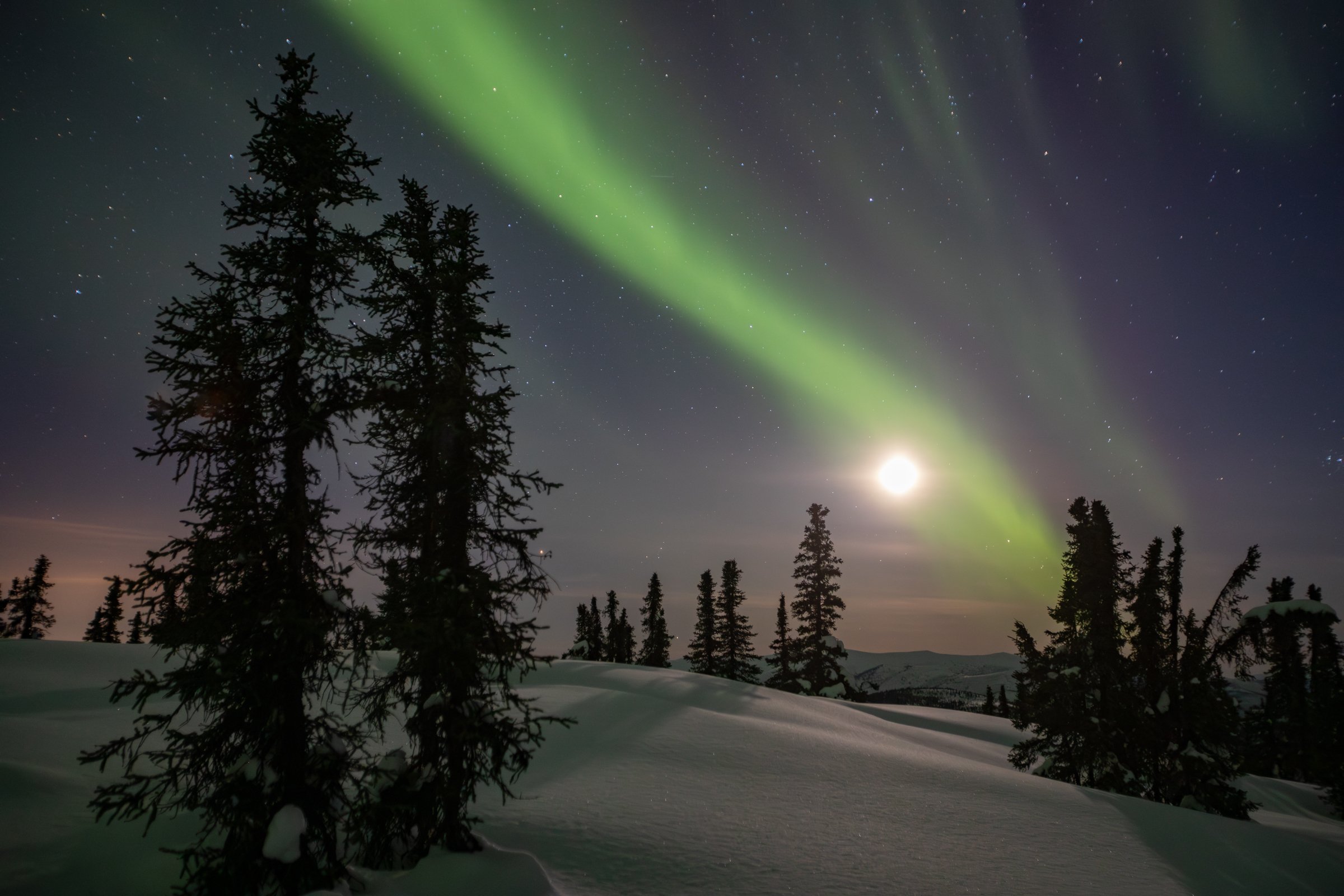
Where to Find the
Northern Lights
Join us on an unforgettable adventure with our exclusive Alaska Northern Lights Photo Tour and Workshop as we delve into the mesmerizing world of the northern lights, the elusive celestial spectacle that has enthralled sky watchers for centuries.
The northern lights, also known as the Aurora Borealis, are a mystical atmospheric phenomenon, often hailed as the holy grail of skywatching. These captivating ribbons of light dance across the sky, born from energized particles journeying from the sun to our Earth's atmosphere at astonishing speeds of up to 45 million mph. Shielded by our planet's magnetic field, these particles are redirected towards the poles, culminating in a breathtaking display that leaves scientists and spectators alike in awe.
To witness the ethereal beauty of the northern lights requires meticulous preparation and strategic planning.
What is the optimal time of year to witness the aurora?
For those eager to catch a glimpse of the aurora's mesmerizing display, the best opportunities arise during the Spring and Fall Equinoxes, typically in March and September. Scientifically speaking, these periods coincide with heightened geomagnetic electrical disturbances, while the Earth's axial tilt aligns favorably to welcome solar particles, resulting in the enchanting spectacle of the northern and southern lights.
Although the aurora can manifest at any time throughout the year, its activity peaks near the spring and fall solstices. Hence, March and September emerge as prime months for aurora hunting. It's not imperative to precisely coincide with the solstice; proximity is key. For instance, if faced with the choice between January and December, opt for January due to its closer proximity to March. February presents an even better opportunity, while March or early April stands out as the optimal timeframe.
In our guided photo tours and workshops, we strategically schedule excursions during March, particularly near the new moon phase, maximizing the chances of clear skies for optimal aurora viewing. However, it's worth noting that September historically tends to be cloudier, making March a more favorable option for aurora enthusiasts.
Why Choose Fairbanks, Alaska?
Fairbanks is situated beneath the Aurora Belt, a geographical region renowned for its frequent and dazzling displays of the northern lights. Nestled amidst this celestial theater, Fairbanks offers unparalleled opportunities for witnessing this ethereal phenomenon. The city boasts minimal light pollution, particularly beyond its urban limits, ensuring unobstructed views of the auroras.
Unlike coastal regions, Fairbanks is not situated near the ocean, sparing it from the dense moisture and clouds that often obscure the aurora borealis elsewhere. Consequently, Fairbanks enjoys clearer nights, enhancing the likelihood of catching sight of the luminous spectacle.
Beyond its celestial wonders, Fairbanks is blessed with breathtaking natural landscapes, from the majestic peaks of the Alaska Range to the serene beauty of the Chena River. The city's picturesque surroundings provide an idyllic backdrop for aurora viewing and exploration alike.
Moreover, Fairbanks offers many exhilarating winter activities to complement the aurora experience. From dog sledding adventures to tranquil winter walks, visitors can enjoy the wonders of the season. Additionally, the city hosts prestigious events such as the World Championships Ice Festival.
Essential Steps for Capturing the Aurora
Step One: Locate a Dark Sky
To capture stunning aurora or Milky Way photographs, the first crucial step is to find a location with minimal light pollution. Bright city lights can obscure the delicate beauty of these celestial phenomena. Utilize dark sky pollution maps, readily available online or through various smartphone apps, to identify optimal spots for astrophotography. Websites like Dark Sky Map offer comprehensive insights into light pollution levels across different regions, empowering photographers to seek out pristine, dark skies for their shoots.
Step Two: Ensure Clear Skies
A sky blanketed with thick clouds can obstruct the mesmerizing display of the aurora. Prioritize locations with clear, unobstructed views of the night sky to maximize your chances of capturing this natural wonder in all its glory.
Step Three: Monitor Aurora Activity
Stay informed about aurora activity levels using dedicated websites and mobile applications. Websites such as Spaceweather.com provide valuable updates on solar activity and aurora forecasts. Familiarize yourself with the KP index, a numerical scale that indicates the intensity of geomagnetic storms. The higher the KP index, the more likely it is for the aurora to be visible and potentially extend farther south. Referencing the KP index can help photographers anticipate optimal viewing conditions and plan their shoots accordingly.
Step Four: Put your time in
When conditions are favorable, invest several hours observing the aurora, ideally from 10 pm to 3 am. Auroral wakeup calls from hotels may not be reliable, and aurora apps can be inaccurate due to the fluctuating KP index. Based on our experience leading photo tours, consistent observation increases your chances of seeing the aurora, with cloud cover being the main obstacle to consider.
KP Index Chart
One Company. Two Paths to Wild Beauty.
Discover unforgettable North America nature photography tours led by one expert team, offered through two specialized websites—each designed to deliver the most immersive, location-specific experience possible.
Explore Alaska Adventures offers exclusive Alaska photo tours, including private yacht expeditions, remote bear photography, and glacier landscapes perfect for dramatic wildlife and nature shots.
Slonina Nature Photography specializes in award-winning photography workshops across North America’s most iconic national parks and wilderness areas, including Yellowstone, the Canadian Rockies, and other bucket-list destinations for landscape and wildlife photography.
One team. One mission. Two websites. Start your next nature photography adventure today.





